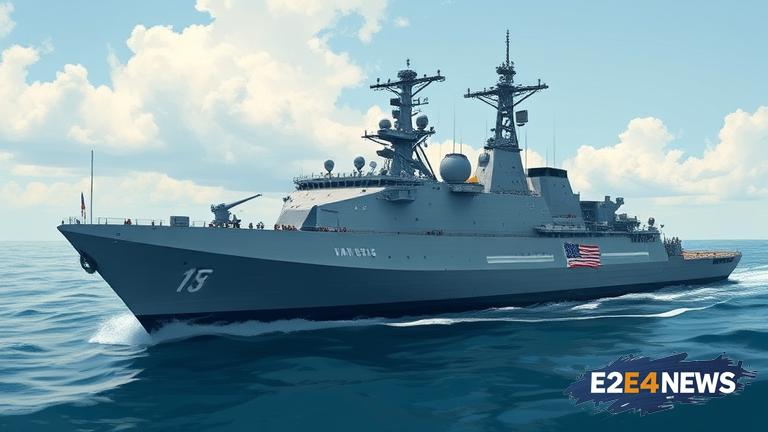The United States Navy has taken a significant step towards modernizing its fleet by creating a dedicated Unmanned Surface Vessel (USV) division. This new division is designed to expedite the integration of unmanned systems into the Navy’s operations, with the goal of enhancing its maritime capabilities and improving overall efficiency. The establishment of this division marks a major milestone in the Navy’s efforts to leverage cutting-edge technology and stay ahead of emerging threats. By harnessing the potential of unmanned systems, the Navy aims to increase its presence on the world’s oceans, improve its ability to respond to crises, and reduce the risk of harm to its personnel. The USV division will be responsible for developing and implementing strategies for the deployment of unmanned surface vessels, which are capable of performing a variety of tasks, including surveillance, reconnaissance, and mine countermeasures. These vessels will be equipped with advanced sensors and communication systems, enabling them to operate autonomously and make decisions in real-time. The Navy’s decision to create a dedicated USV division is a testament to its commitment to innovation and its recognition of the critical role that unmanned systems will play in the future of maritime operations. The division will work closely with other Navy units, as well as with industry partners and academia, to develop and test new unmanned technologies. This collaborative approach will facilitate the rapid development and deployment of unmanned systems, ensuring that the Navy remains at the forefront of technological advancements. The establishment of the USV division is also expected to have a positive impact on the Navy’s budget, as unmanned systems are often more cost-effective than traditional manned vessels. Furthermore, the use of unmanned systems will enable the Navy to reduce its environmental footprint, as these vessels are designed to be more fuel-efficient and produce fewer emissions. The creation of the USV division is a significant development in the Navy’s ongoing efforts to modernize its fleet and improve its operational capabilities. As the Navy continues to evolve and adapt to emerging threats, the role of unmanned systems is likely to become increasingly important. The USV division will play a critical role in shaping the future of maritime operations, and its establishment is a major step towards a more autonomous and efficient Navy. The division’s work will have far-reaching implications, not only for the Navy but also for the broader maritime community. As unmanned systems become more prevalent, they are likely to have a significant impact on the way that maritime operations are conducted, from search and rescue missions to environmental monitoring and conservation efforts. The Navy’s investment in unmanned technology is a clear indication of its commitment to staying at the forefront of innovation and its determination to remain a dominant force in the world’s oceans. The establishment of the USV division is a major achievement, and its impact will be felt for years to come. The division’s work will be closely watched by other navies and maritime organizations around the world, as they seek to learn from the Navy’s experiences and adapt to the changing landscape of maritime operations. The use of unmanned systems is expected to become increasingly widespread, and the Navy’s leadership in this area will help to shape the future of maritime operations. The creation of the USV division is a significant development, and its impact will be felt across the maritime community. The Navy’s commitment to innovation and its investment in unmanned technology are a testament to its dedication to remaining a dominant force in the world’s oceans. The establishment of the USV division is a major step towards a more autonomous and efficient Navy, and its work will have far-reaching implications for the future of maritime operations.
